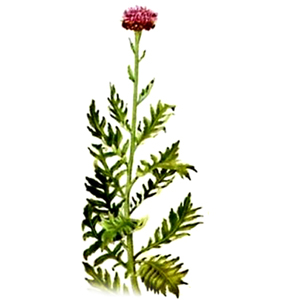No products
Rhaponticum/Maral root - 50g
(Radix Rhaponticum carthamoides)
Rhaponticum/Maral root (Rhaponticum carthamoides) has stimulant effects similar to ginseng, slightly increases blood pressure, has positive effects on the CNS eg. improves learning ability. Reduces blood sugar and cholesterol, it has anabolic effects without side effects...
![]()
Content |   |
Binomial nameRhaponticum carthamoides Commonly called (often known as)Maral root StorageStore in a dry place at a temperature up to 25°C |
Description of herb
Rhaponticum/Maral root (Rhaponticum carthamoides) comes from southern Siberia and is a large Asian medicinal plant that resembles a thistle in appearance, but is without thorns. The whole plant has medicinal properties and has been used in folk medicine for centuries. Its toning and healing effects are evaluated as similar to Ginseng.
It grows on forest clearings or alpine meadows in the Altai and Sayan mountains from 1200 to 2000 m above sea level, where it often forms continuous stands. It is called the maral root because it is sought after by mares deer during rutting and with its help they increase their activity. Other animals also like to consume it and visibly improves their condition.
Healing effects
Ecdysteroids are the main active substance - they increase the body's resistance, they have adaptogenic activity (they act against stress), when they are used, the body regenerates much faster, these substances have a stimulating effect on the central nervous system.
These substances shorten the sleep time after sedatives, improve the metabolism of sugars, fats and cholesterol, increase the storage of proteins in the striated muscle (this "anabolic" effect is successfully used in athletes who engage in both strength and endurance sports (bodybuilding, cycling). However, this effect is not harmful as in the case of the prohibited use of anabolic hormones.
Ecdysteroids also have a protective effect on the liver and have a protective effect on the heart and blood vessels. Flavonoids complement the biological effect of ecdysteroids - they contribute to the reduction of cholesterol levels and have a protective effect on the vessel wall. The effect of polyacetylenes has not yet been elucidated - they appear to have some antimicrobial effect.
Active substances
- ecdysteroids
- flavonoids
- polyacetylenes
Properties
Adaptogen, immunostimulator, anabolic, tonic, aphrodisiac.
Recommended at
- stress
- stimulates the central nervous system
- lowers cholesterol
- improves sugar metabolism
- protective effect on the liver, heart and blood vessels
- strengthening immunity
Preparation and dosing
TEA
Preparation: Root decoction, prepared by boiling 1 tablespoon of dried root for one minute and infusing for half an hour.
Dosing: In the morning and at noon one cup.
TINCTURE
Preparation: The most effective pharmaceutical form is a tincture of the root (150 g of dried root poured with 1 liter of 50% alcohol is left to infuse for 3 weeks, shaken daily, then drained - pressed out).
Dosing: 20 drops 3 times a day. It is taken before meals for 4-6 weeks, then it is advisable to include a 1-2 week break.
Side effects
Unlike some other adaptogenic plants, the risks are practically negligible. The only bigger risk is low blood pressure. In some people, at higher than recommended doses, there is increased brain irritation, which is replaced by drowsiness.
REMEMBER: Tell all your health care providers about any complementary health practices you use. Give them a full picture of what you do to manage your health. This will help ensure coordinated and safe care.

